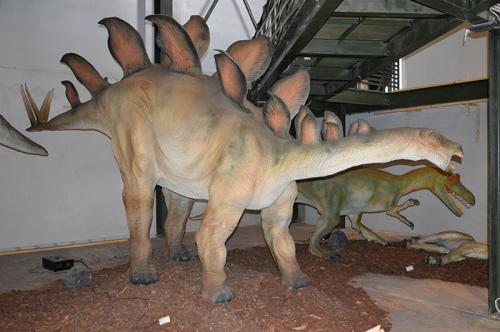Smallest brain
Stegosaurus armatus is an armoured dinosaur that lived in western North America during the Jurassic, 145 - 157 million years ago. Nevertheless, in 2006 it was found in Portugal, which expands its presence in Europe as well. Stegosaurus means “covered lizard” in reference to the bony plates and distinctive tail spikes.
An herbivore with a distinctive, heavily built structure, curved back and short limbs that held its head close to the ground while the tail was high in the air. The position of the head indicates that most likely it ate low bushes and shrubs. This is also supported by the lack of front teeth which were replaced by a horny beak. A recent computer analysis revealed that these animals could chew tough plants or branches less than 12 mm thick.
In the past, it was assumed that the osteodermata on its back were for defence and display. However, today scientists presume that, due to their fragile structure, they were for cooling, like the ears of modern elephants. The spikes on its tail were probably used for defence.
It had a very small brain compared to its size, approximately 80 grams although the animal weighed nearly 5 tons. Its brain was no larger than that of a dog’s.
















